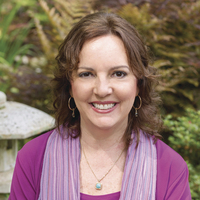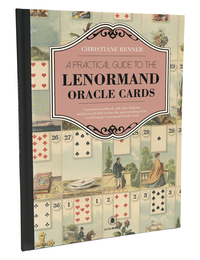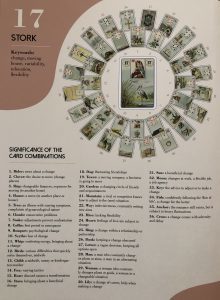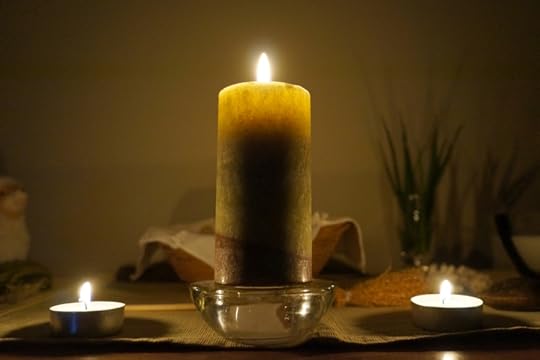Llewellyn Publications's Blog, page 29
August 7, 2019
The Language of Tarot

In The Language of Tarot, Jeannie Reed teaches us her system for reading the cards, a system that has satisfied her clients for over 30 years. Tarot is a language and when you learn it, you can read the cards like reading a book. You can read an excerpt below and find out more HERE.
Telling Stories
Let’s say a reporter is walking down the street and comes upon the scene of a fire.
He pulls out his notebook and starts asking questions: “What happened? Do you know how it started? Do you know where it started? Is anybody hurt? What hospital did the victims go to?” And by asking all kinds of questions like this, the reporter puts together the story of that fire.
Your job as a card reader is to ask yourself the same types of questions as you draw cards to respond to your client. I’m saying throughout this book that a good reader doesn’t have to rely on intuition alone. God gave your brain two hemispheres. Use them!
On the other hand, if you’re the rare reader gifted enough to do all the work purely by intuition, that’s wonderful!
So to do a good reading we need to ask ourselves questions, and draw cards to answer those questions. And then we can tell our clients complete stories: stories that have beginnings, middles, and endings. Who, what, when, where, why, how.
Say you’re reading a client with job problems. Well, maybe there is one big story that started way back when, when the person made what seemed to be even a small decision, and it ended up impacting his life to this day. (For example, say the client chose a certain career and is no longer happy at it).
Well, if you’re going to be any help at all, you need to be able to tell the client when something started, what’s going on now, and where the situation is heading, so the client can see the beginnings and attempt to understand the old motives vs. the new. You need to be able to explain what the client can do now to change direction a bit, to diversify or to make a completely new choice. I see myself as a namer of options and outcomes: if you do this [method], you can expect that.
So: Say you’re reading for a client who chose to be a doctor because the men in his family always become doctors. You see the father expecting it of his son (The Emperor); you see the son not being listened to (the Page of Rods/Wands reversed); you see the guy is a good doctor (The Magician) but unhappy (the Three of Swords) despite the money he makes (the Six of Pentacles).
So now you can tell him his issue goes beyond not liking his career. You can suggest that his choice in the first place seems to have had something to do with displeasing his father way back when. So you take him back to when he used to talk about his owndreams and was ignored, when he was a kid. Now your client can start to see his current issue in terms of thelargerpicture of his whole life. It can become clear to him that if he chooses to leave medicine, he may be risking the wrath or rejection of his father. Only he can decide if this matters anymore.
And then you line up as many cards as it takes to see what can happen if he does choose to stop being a doctor.
Whatever shows up, you can now tell a story with a beginning, middle and end. This is typical of my readings. I try to find the whole enchilada. I do it so people can make choices and decisions without lacking pieces of important information.
And if you start reading cards like you’re reading these sentences, you can too.
August 5, 2019
How Women Can Deepen Their Relationship with Their Self-Care
Readers, please enjoy this guest blog post by Rhoda Shapiro, author of Fierce Woman.
 We’ve all heard it many times: Self-care is absolutely essential.
We’ve all heard it many times: Self-care is absolutely essential.
As women, we’re well aware of this fact. We put so much energy every day into jobs, tasks, responsibilities, and relationships; if we don’t replenish and nurture ourselves in the process, we’ll eventually get depleted.
Many of us put off self-care because there’s simply no time for it. Others feel guilty about carving out the time to do something for ourselves.
Right now, I feel like our definition of self-care is quite limiting, which is actually keeping us from engaging in it at a deeper level.
When we think of self-care, we usually think of making the time to do things like: schedule a massage, take a bath, go on a hike, or engage in a spa day. While these things are great, they’re not things we can partake in every day. Given our schedules and responsibilities, this kind of daily self-care would be absolutely impossible for the majority of people.
However: What if we started to look at self-care as something effortless, something that we can seamlessly integrate into our daily lives?
Then, self-care becomes an ongoing act.
The only way to do this is by engaging self-care in a deeper, more holistic way.
True self-care means knowing your boundaries, and not being afraid to say, “no” to something that doesn’t resonate with you. It means being kind and gentle to yourself on a minute-to-minute basis. It means letting go of all the tired expectations of what and who you should be. It means nurturing those positive relationships in your life.
Self-care is about loving and accepting who you are. And the opportunity to do that is available in each and every moment.
Our thanks to Rhoda for her guest post! For more from Rhoda Shapiro, read her article “Women: 3 Ways to Wake Up Your Badass Self.”
July 29, 2019
Earth Frequency: Why Are Sacred Sites So Powerful?
Readers, please enjoy this guest blog post by Melissa Alvarez, author of Your Psychic Self, 365 Ways to Raise Your Frequency, Animal Frequency, Believe and Receive, The Simplicity of Cozy, and the new Earth Frequency.
 There are locations all around the world that radiate a deeply potent, positive energy. I’m often asked what makes some sites more powerful than others. I believe there are several factors involved when answering this question. Let’s consider the following:
There are locations all around the world that radiate a deeply potent, positive energy. I’m often asked what makes some sites more powerful than others. I believe there are several factors involved when answering this question. Let’s consider the following:
Earth Frequency: The Earth is a huge ball of active energy. At its core, there is magma that is constantly shifting and moving, heating the planet from the inside. In other layers, you’ll find enormous areas of rock plates that shift and move at a very slow speed. On the surface there are factors that affect the energy of the Earth in each location, such as waterfalls, volcanoes, mountains, caves, and the oceans. When the inner energy of the Earth outflows to the surface and creates these types of places, it can make the energy of the place even stronger. Other types of Earth energy are tidal energy, wind energy, sound energy, chemical energy, and nuclear energy. If any of these types of energy are more prevalent at a sacred site, then that increases its power.
Vortex Energy: The Earth also creates vortexes in many locations, which are very strong and can feel transformational to the people who encounter them. This energy at vortex sites can be projected outward from the Earth or drawn back into the Earth. Many sites are often built at areas of vortex energy because the people were drawn to the energy and considered it to be sacred.
Ley Lines: Many power places or sacred sites, both natural and man-made, are found on ley lines, which represent the invisible lines of energy that surround earth. Throughout history these lines have also been known as song lines, holy lines, fairy paths, dragon lines, and spirit lines. These ancient and sacred tracts are believed to form both a mystical and spiritual energy alignment between land formations throughout the world.
The History of the Place: Things that happen in a location leave an imprint on the place. The type of events that occurred will reflect the energy held there. Places where there were a lot of ancient sacrifices or wars may hold a darker energy than places that were used only for worship. That doesn’t mean the energy is bad, it is simply an imprint of the past, which may represent a lesson for someone in the present that comes into contact with the energy. In places where a volcano erupted the energy may feel explosive, frantic, and fast-moving, which may mean that you are going at full speed to much and need to slow down or that you’re not meeting your full potential and need to speed up to accomplish more. All energy teaches us something important on our path.
These factors are what make sacred sites feel so powerful. When you consider the energy that is naturally found at a site, the energy of the people who lived and worshiped there, and the energy it took to create the structures found in a power place, it’s easy to conclude that places containing several different factors will hold more powerful energy than a location that only contains only one factor. For instance, encountering a small area of vortex energy while taking a walk in nature can be a very powerful, uplifting, and transformative experience, but visiting places like the Great Pyramids of Giza, Mount Kailash, or Ayers Rock (Uluru) will have even more powerful energies associated with them due to the amount of Earth frequencies and vortex energies found there, the history of the place, and the imprint energy left by the people who called it home. This is why I believe some places feel stronger than others, although, any time you connect with Earth’s frequency, you’re in for a powerful experience.
Our thanks to Melissa for her guest post! For more from Melissa Alvarez, read her article “4 Ways to Connect with the Earth’s Frequency.”
July 24, 2019
2020 Tarot Calendar

Hey friends, it’s that time of year again! The Llewellyn annuals are almost ready to go. Llewellyn’s Tarot Calendar is in its third year and looking as great as ever. Full of beautiful art, awesome tips, fun facts, and spreads, this calendar will bring tarot into each day of the year. Find out more HERE.

July 23, 2019
Happy Imbolc to Our Southern Hemisphere Friends!
Here in the northern hemisphere, Lammas/Lughnasadh, the first of the harvest festivals, is almost upon us, but for our southern hemisphere friends, it is time for the Imbolc/Candlemas. To help you celebrate, we’ve rounded up our best rituals, spells, books, and more!
Using the Tarot for Sabbats and Esbats: Imbolc: Celebrate Imbolc with a spread and other tarot-inspired ideas.
Ritual: An Imbolc Celebration: Use this Imbolc ritual to release old wounds in order to create fertile soil for new ideas and possibilities.
Traveling Deeper with the Wheel of the Year: We are all familiar with the Wheel of the Year and its celebrations. But what if we take a deeper look at the Wheel and the lessons it offers, seeing not just eight festivals of celebration, but a parallel of the waxing and waning of our lives?
Imbolc/Candlemas Spells: Browse our spells to find your perfect Imbolc ritual or incantation.
Books:
Imbolc
Llewellyn’s 2020 Sabbats Almanac
Rituals of Celebration
Supermarket Sabbats
Sabbats
The Witch’s Wheel of the Year
Author Rosemary Ellen Guiley Has Passed

Image via http://www.coasttocoastam.com
Today we sadly mark the passing of author Rosemary Ellen Guiley, a leading expert on the paranormal, and author of more than 45 books (including The Vengeful Djinn) and hundreds of articles on a wide range of topics. She was a frequent guest on Coast to Coast AM with George Noory. Guiley was a consulting editor of FATE Magazine and a frequent lecturer across the country.
Her knowledge and research will live on in her books and through the countless people she enlightened with her work.
July 22, 2019
Finding Your Useful Purpose Brings Joy: The Thinking Tree Meditation
Readers, please enjoy this guest blog post by Bryn Blankinship, author of The Limitless Soul.
 What makes you happy? What is your useful purpose in life?
What makes you happy? What is your useful purpose in life?
Over many years of practice as a transpersonal hypnotherapist specializing in past life and spiritual regression, a common complaint of clients is that they are not happy. Many are seeking happiness outside of themselves, while others aren’t taking time to nurture their own happiness along with helping others in their life with theirs. Oftentimes they have lost sight of their purpose or they are so focused on the past or future that they are not truly enjoying the present moment. My goal is to help them to find purpose in their lives by taking them deep within to where they hold the answers to their own healing.
In Chapter Four (“Taking the Path of Contemplation”) of my book, The Limitless Soul, my client discovers that in a past life as a monk named Henry, his useful purpose was baking bread for his brothers at the monastery and being of service to them and to the community. He was meticulous with his bread recipes and enjoyed spending time baking different kinds of breads. This parallels his current life, where he enjoys spending time perfecting recipes for the brews he serves at a chain of pubs he owns. He also recognizes his connection to his family, community, and nature as ways of sharing spirituality without the need for a formalized church.
In that past life, Henry as a younger monk spent time under his “thinking tree,” ruminating over the loss of his family prior to joining the monastery and working through angry feelings surrounding those events. Later in his life, the tree served as an anchor for him to quietly ponder and reconnect to the Earth.
This “Thinking Tree Meditation” is a way readers can take the path of contemplation to connect to their own happiness by discovering their useful purpose.
Find a quiet spot under a tree that feels “right” to sit under and recharge. Sit with your back against the tree. Let your bare feet touch the earth.
Sit quietly. Close your eyes. Observe.
Listen to the sounds you hear.
Feel the breeze and the warmth of the sun on your skin.
Where are you in your thinking—the past, present, or future? Bring your thoughts into the present.
Bring your attention to the tree and feel its wisdom connecting with your innate ability to connect with your soul’s wisdom. Can you feel its energy boost as it connects with yours?
Allow the tree’s energy to help you find answers to your questions. Let the tree lift the weight of worry from your spirit and send it up into the light.
Allow yourself to relax, knowing that the answers you seek are available. As you tune inward, you will know what it is that you need to know and what to do next.
Tune in and recharge. Let it help you to recognize your useful purpose and bring you joy.
Our thanks to Bryn for her guest post! For more from Bryn Blankinship, read her article “Spiritual Regression: Why Are You Here?.”
July 10, 2019
A Beautiful Lenormand Resource

A Practical Guide to the Lenormand Oracle Cards by Christiane Renner really is a practical and attractive companion to your Lenormand deck, this book’s core value is in the card combinations, which is one of the most important aspects of reading Lenormand cards. There are brief instructions for doing a Grand Tableaux.
You can learn more HERE.
The easiest way to showcase this book’s usefulness is to show you a page.

July 8, 2019
What Is a Hedge Druid?
Readers, please enjoy this guest blog post by Joann van der Hoeven, author of Book of Hedge Druidry.
Being a Hedge Druid is all about connecting to the world around you—not just this physical world, but also the Otherworld that lies alongside and overlaps this one. It is about learning where we fit in the world, where we belong, what our place is in the ecosystem. Once we have found our place, we can then work to the benefit of the whole, much like the trees, the nettles, the beetles and the geese. It is about living as naturally as possible, and that means not only being authentic, but also living as close to nature as you can within your own environment. It’s about knowing what the phase of the moon is, what is flowering, where the ants live, what the human community is doing. It’s about having fingers in a lot of metaphorical pies, learning everything you can about the world around you, and knowing that you will never stop learning.
Being a Hedge Druid is about liminal places, about connecting to more than just this world. In places like the hedgerow, where two places meet, which is neither one nor the other, this is where the greatest transformation can occur. This is a place of power. The edges, the borderline places such as where the forest meets the meadow, or at the edges of a lake or pond, is where the magic happens. This is where there is the greatest diversity, where life flourishes, built upon death and decay. This is where we can cross over to the Otherworld, to meet with the Fair Folk, or the ancestors, or spirit guides.
Being a Hedge Druid is about working with the World Tree, the ancient Celtic bíle, the axis mundi that links the realms of the Otherworld to this one. When we learn to ride the hedge, to ride the World Tree, we can travel to the Lower, Middle, and Upperworld, there to meet with great powers, and to widen our perception so that we may return to our world with the light of Faery and the wisdom of the Second Sight in our work.
Above all, being a Hedge Druid is about living a life in service to your path, to your Druidry. Although it may be a solitary path, it is one that is utterly dedicated to the natural world, and to benefitting the whole. It’s about putting aside the ego and instead working with the notion of integration, of becoming a part of something, a tribe that has no boundaries. It’s about understanding the meaning of life, which is to give your life meaning.
It is all this, and so much more.
Our thanks to Joanna for her guest post! For more from Joanna van der Hoeven, read her article, “Putting the “Hedge” Back in Hedge Druidry.”
July 1, 2019
Become Your All-Year Round Life Coach with Seasonal Meditation Questions
Readers, please enjoy this guest blog post by Jilly Shipway, author of the new Yoga Through the Year.
Seasonal meditation questions are a series of open inquiries that help you to reflect on how you wish to use your energy and set your intentions for the coming season. In seasonal yoga we use them every six weeks or so (to correspond with the solstices, equinoxes, and seasonal transition points). By working with them you can become your own year-round life coach. The questions combined with a meditative approach give you access to the deep wisdom of your subconscious mind and help you to align your own energy to the prevalent energy of the season. Throughout the year they give you the opportunity to review progress in all areas of your life, and if you’ve gone off track, you can correct yourself and get back on course again.
Here are some examples of meditation questions for the Summer Solstice, when there is a gradual shift in energy from outward action to inner reflection and contemplation:
Which outward achievements do I wish to bring inside to my inner sanctuary to be processed and transformed?
Do I value both my inner and outer worlds in equal measure?
Which seeds do I wish to incubate during the darker half of the year?
What do I want to nurture and develop in myself over the coming months?
And here are some for Summer to Autumn, which is the season of first harvest:
What is my own personal harvest?
Who has helped me to realise my harvest, and how will I thank them?
How will I celebrate my harvest and how will I share my abundance with others?
Which seeds will I be incubating over the autumn and winter ready to plant out next spring?
There are various ways that you can use the meditation questions, and even if you haven’t much time, you’ll still be able to fit them in. For example, you could read the meditation questions before you go to bed, and trust that your subconscious and the universal conscious will come up with some wonderful answers while you are sleeping.
Many of us spend too much time sitting down, so the last thing we want to do is spend more time sitting and meditating. The good news is that you can walk and meditate! You can walk meditatively along a corridor at work, in your room or garden, in the park, or anywhere else. As you walk, gently turn the meditation question over in your mind. If your mind wanders off, gently bring your awareness back to focusing on the question.
Or, during a yoga session, you could try holding a meditation question in your mind as you stay in a yoga pose, or incorporate it into a sitting meditation or yoga relaxation.
In my book, Yoga Through the Year: A Seasonal Approach to Your Practice, you’ll find the full set of meditation questions for each season, as well as mindfulness exercises, visualizations, meditations, yoga poses and sequences that are specially designed for each season, and you’ll also learn how to personalize the practices to fit your needs all year long.
Our thanks to Jilly for her guest post! For more from Jilly Shipway, read her article, “7 Ways to Create a Balanced Life with Yoga and Seasonal Awareness.”
Llewellyn Publications's Blog
- Llewellyn Publications's profile
- 243 followers








